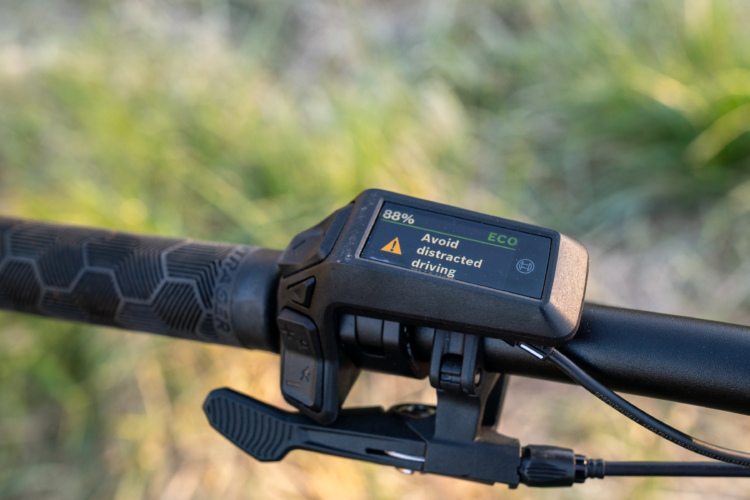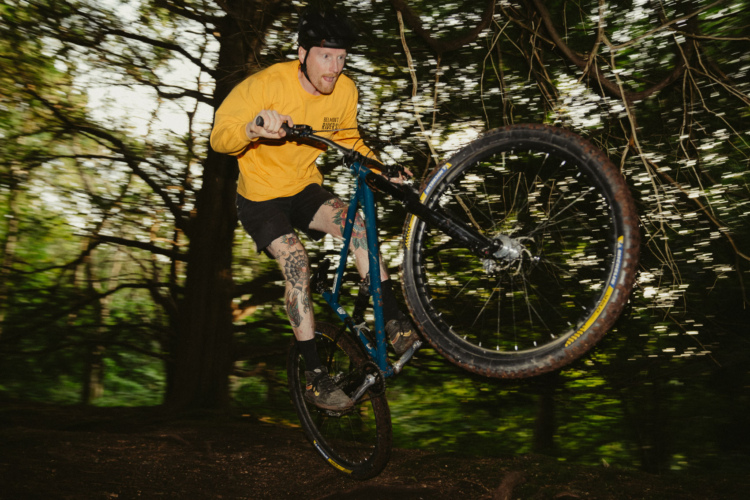
Beginning around the first of October, the eMTB announcements started rolling in. The all-new Santa Cruz Vala. The Norco Sight VLT CX. An updated Orbea Wild. The Pivot Shuttle LT. In all, we tracked a dozen or more new and updated electric mountain bike announcements in October and November, most featuring the new Bosch Performance Line CX motor.
“We were one of the first launch partners,” Santa Cruz Brand Manager Garen Becker told me. “The [Bosch] motor system launched the day before the Vala came out.”
While the electric mountain bike market is in a growth and development phase with multiple competing designs and standards, this Bosch Performance Line CX motor launch could mark a turning point as brands begin to coalesce around a select few platforms based on performance, standardization, and technology.
“EMTB is still very young,” Norco Product Manager Paul Burnett said. “It’s getting refined. I think the motors are getting there, as far as the output and weights as well.”
Bosch Performance Line CX motor performance
In a September 30, 2024 press release announcing the launch of the Bosch Performance Line CX motor, the brand modestly promises an “evolutionary step” toward improved power and efficiency. The updated, fifth-generation CX motor, according to the release, includes sensors that “measure acceleration and rotation speeds in six dimensions, and recognize inclination and tilt angles as well as vibrations” in a bid to deliver smoother, more natural assistance. It’s also said to be quieter than the previous version, and lighter weight, too. The goal, clearly, is to deliver a classic mountain bike ride feel, which is easier said than done. However, by all accounts, Bosch seems to have nailed it. Or at least, they’re much closer than anyone else at the moment.
“As far as the performance of the CX, it’s just so refined,” said Burnett. “And you know, it’s awesome. It’s just really good.”

“We think it’s the best thing on the market,” Becker said. “From a reliability, from a reputation, and a performance standpoint, the Bosch is far and away, I think, the best.”
Looking at raw specs, the Bosch Performance Line CX doesn’t immediately stand out from competing Shimano EP8 series motors, with 85Nm of max torque and 600W of maximum power output. Though the latest CX motor dropped some weight, it’s still a bit heavier than the Shimano motors at about 2.8-2.9kg versus 2.7kg. The difference, it seems, is in how the Bosch motor delivers power, quickly responding to minute changes in pedal input from the rider.
“The way [the Bosch] applies power is like night and day. If you ride them back to back, it will make the Shimano bike feel like an on-off switch,” said Becker.
The upshot is not just a more natural ride feel but also better traction for climbing and easier starts from a stop.
“There’s all these little refinements. It’s quiet. There’s zero rattle,” said Burnett. “There’s no banging, there’s less resistance in the pedal.”

Standardization
If you already own an electric mountain bike with a Bosch motor, chances are slim to none that you can upgrade to the new Performance Line CX motor. Unlike drivetrains, disc brakes, wheels, and pretty much everything else on a modern mountain bike, motor sizes, shapes, and mounts aren’t standardized across brands or even within the brands themselves.
This new, fifth-generation Bosch Performance Line CX motor utilizes a two-bolt mount system, which is a change from the previous version, which used six bolts. For bike brands to take advantage of the new CX motor, they needed to completely update their frames, which largely explains all the October and November bike launches. Burnett thinks the new two-bolt pattern is going to be the standard going forward, at least for Bosch, and at least for the next few years.
Bosch offers what is essentially a closed system that includes both the motor and the battery. Brands like Shimano sell their own batteries but also allow partners to use third-party batteries and cables, which can be designed and configured to fit various frame shapes and sizes, but aren’t always well-supported. So, when something goes wrong, it’s difficult for the brands and suppliers to troubleshoot and fix the issue.
Battery safety and overall reliability are a big concern for big bike brands like Santa Cruz and Norco, and a closed system from a brand that offers global service and support is a big plus. As the market becomes more mature, brands seem to be less willing to take a risk on a powertrain system that’s cobbled together from multiple vendors. At the moment, cost doesn’t seem to be a big consideration for the brands speccing eMTB powertrains; it’s better to pay more for a reliable and performant end-to-end system.

Bosch PowerTube batteries are now available in 600Wh and 800Wh capacities, and both are the same length, making them more easily interchangeable. The 800Wh PowerTube is the largest capacity battery the brand has offered to date, which has allowed more MTB brands to spec the system on bigger, full-power e-bikes. The difference in weight between a 600Wh battery and a 800Wh battery is fairly significant — about two and a half pounds — and interchangeability allows buyers to choose what is best for their riding style and conditions.
For the Norco Sight VLT CX in particular, switching to the Bosch PowerTube and making the battery non-removable shaved significant weight off the bike since designers were able to eliminate a lot of hardware, and also because the battery itself uses high-density cells instead of low-density ones.
“The range that you can get out of that battery is really impressive,” said Becker.

Technology
Beyond performance, both Becker and Burnett praise the Bosch Performance Line CX for its technology. For starters, the Bosch system is wireless, which simplifies frame design and eliminates the chance that a sensor stops working because of a pinched wire somewhere inside the frame.
Becker says the Bosch controls are much improved compared to previous versions. Santa Cruz uses a Bosch display that’s built into the top tube, allowing the rider to toggle modes and check range at a glance without interfering with handlebar controls. Norco uses the same top-tube controller, rather than the Purion 400 handlebar display controller that recently launched.
Today’s mountain bike motors are highly tunable, and the Bosch Performance Line CX is no exception. Buyers and brands alike expect regular firmware updates to get improved performance and additional tuning options, which is yet another reason both are gravitating toward the bigger brands that are able to offer this level of support.
Along with the launch of the latest Bosch Performance Line CX motor, the brand also rolled out a new e-bike braking system called ABS Pro. While Bosch says the system, which claims to improve braking performance, is designed for “discerning MTB riders” and “enduro racers,” neither of the brands I spoke with are offering builds with Bosch ABS Pro hardware.
Electric mountain bike buyers are savvy, especially given that many may be considering their second or third eMTB purchase at this point. For a significant number, the brand on the motor is just as important as the brand on the frame. While many bike brands have recently adopted the Bosch Performance Line CX motor, there are a few notable holdouts that don’t offer a single eMTB model with a Bosch motor. Rocky Mountain, Specialized, and Giant spec some or all of their electric mountain bikes with their own custom motor; YT has eMTB models based around Fazua and Shimano motors only. I reached out to YT for comment but did not receive a response.

Not a victory lap
While Bosch appears to have won over a sizable number of MTB product managers with the Performance Line CX, everyone I spoke with still has one eye toward what’s next. It’s almost certain that Shimano has something up their sleeve, and SRAM too. If we look at the big product categories like suspension and drivetrains, a couple of big brands dominate the market, particularly on the OEM side, and now the electric mountain bike powertrain market may be heading in a similar direction. At least, once the technology stabilizes.
“We’re not dedicated to one single system, but we are dedicated to closed systems,” Burnett told me. “We’re invested in eMTB for the long haul. We see it as just… it’s the future of mountain biking.”





















9 Comments
Nov 22, 2024
It sounds like this two-bolt mounting system is pretty slick. Hopefully this becomes a standard that improves compatibility, even across brands.
Nov 28, 2024
Nov 22, 2024
Nov 22, 2024
Nov 22, 2024
Nov 22, 2024
Nov 22, 2024
Nov 22, 2024
Nov 24, 2024